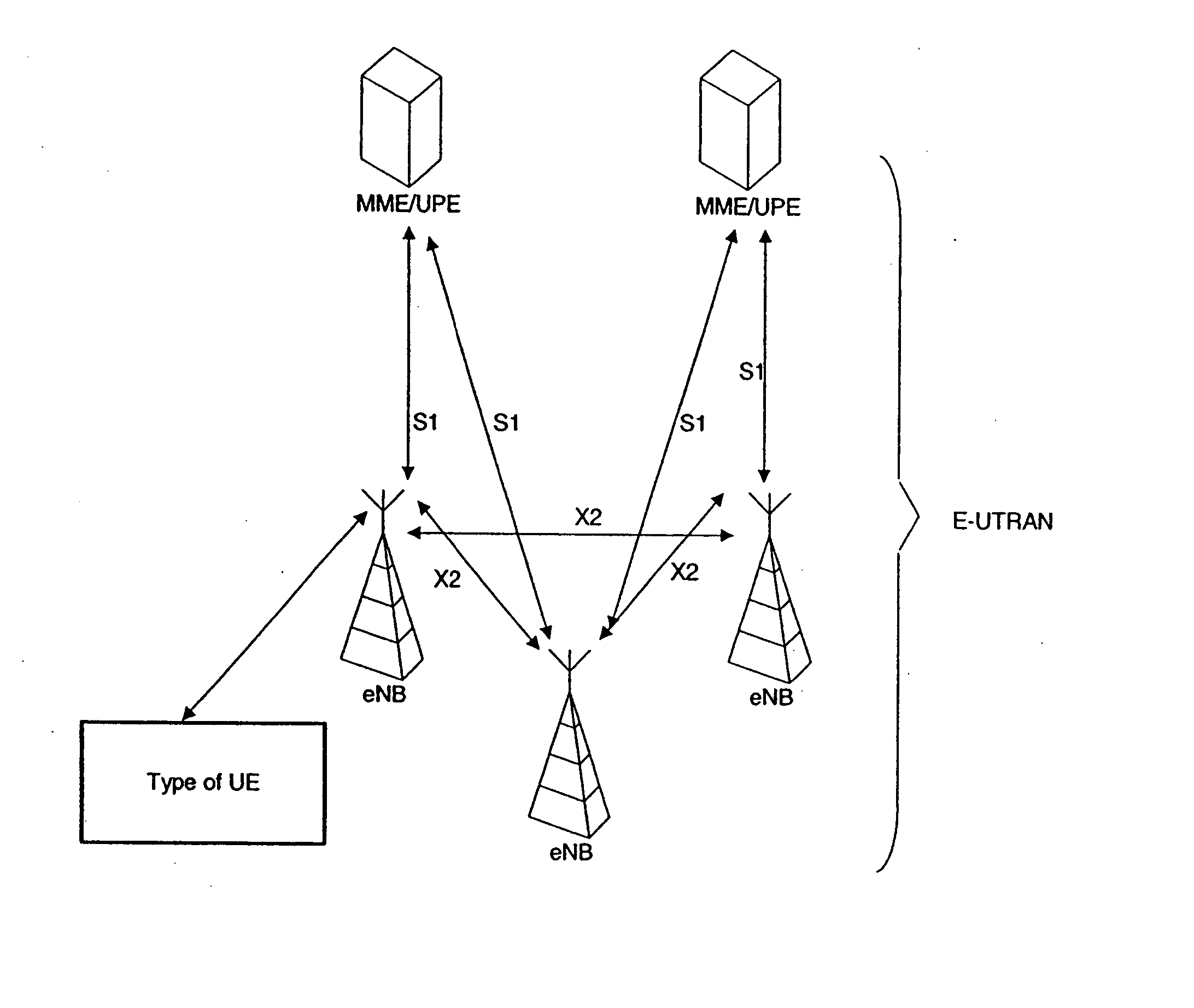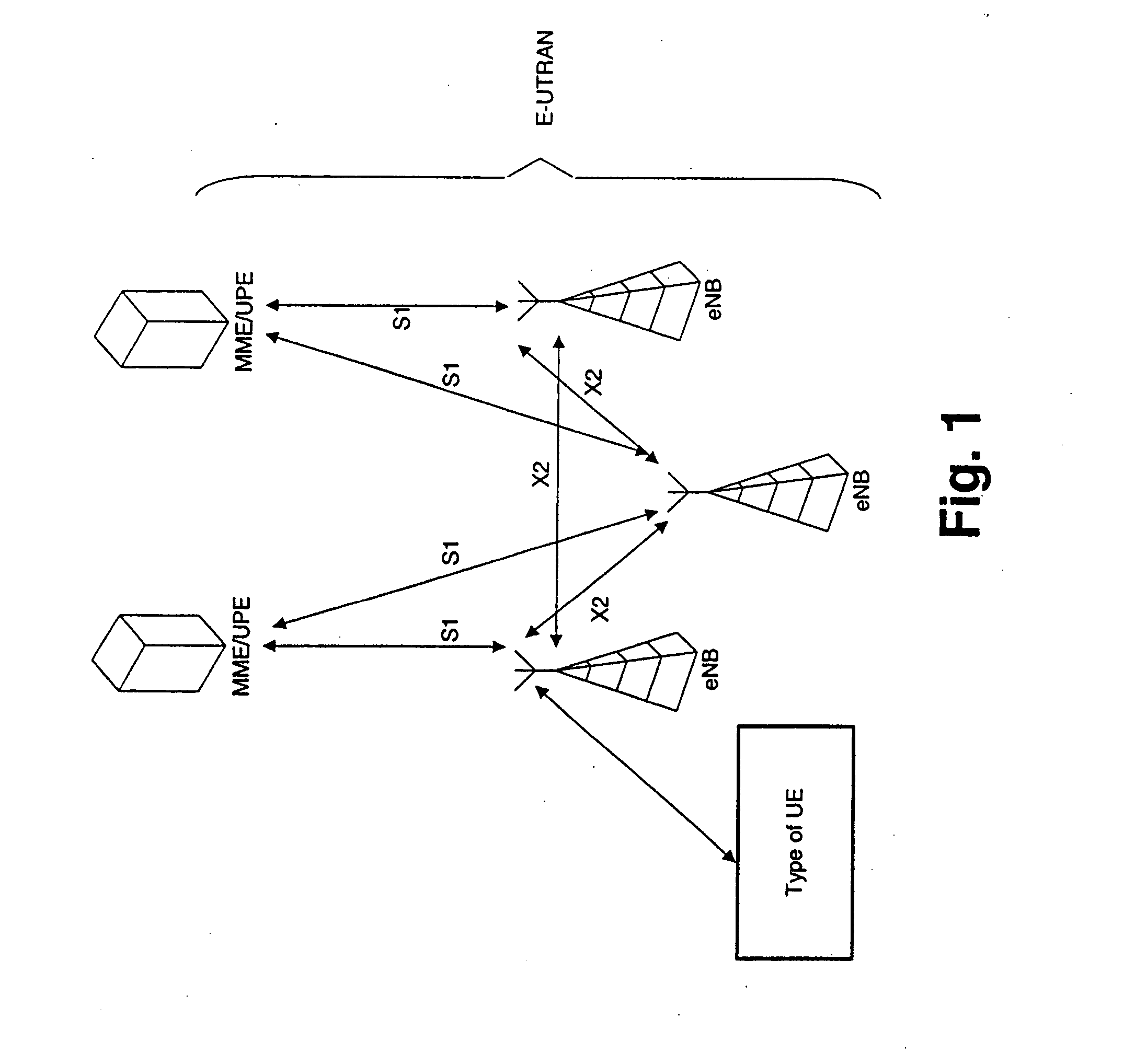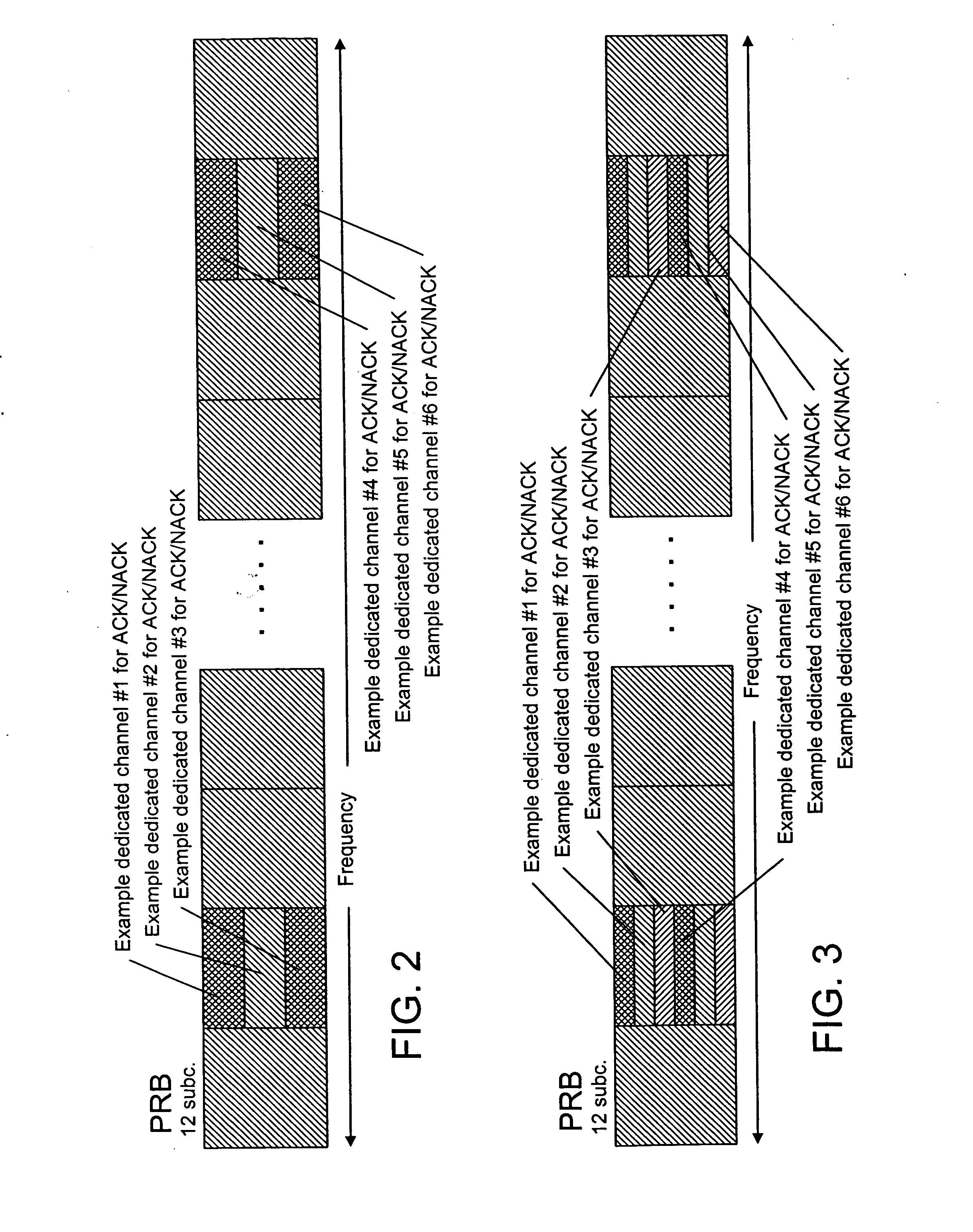Adaptive scheme for lowering uplink control overhead
a technology of overhead control and adaptive scheme, applied in the field of wireless communication, can solve problems such as system capacity loss, and achieve the effect of increasing the utilization of uplink resources and efficient shifting of physical resources
- Summary
- Abstract
- Description
- Claims
- Application Information
AI Technical Summary
Benefits of technology
Problems solved by technology
Method used
Image
Examples
Embodiment Construction
[0055] Based on the physical resources that may be needed for sending an acknowledgement / negative acknowledgement (ACK / NACK) report, a network element, for example an evolved NodeB (eNode B), may reserve a significant signaling space for each transmission (tied to downlink packet transmission). For example, in WCDMA / HSDPA, it is possible to use a factor-10 repetition of the ACK / NACK bit as well as efficient frequency diversity by spreading. This means that the fading margin is rather small for the WCDMA case except when the signaling is in flat channel conditions.
[0056] Depending on the design of the control channels in LTE, it may be possible to have less frequency diversity. For example, in sending an ACK / NACK report in UTRAN LTE, it may be possible to use distributed transmission of the 10 repetitions. However, this may impact many physical resource blocks that could be used for data transmission, and there may be a need to reduce overhead. For example, using an added fading marg...
PUM
 Login to View More
Login to View More Abstract
Description
Claims
Application Information
 Login to View More
Login to View More - R&D
- Intellectual Property
- Life Sciences
- Materials
- Tech Scout
- Unparalleled Data Quality
- Higher Quality Content
- 60% Fewer Hallucinations
Browse by: Latest US Patents, China's latest patents, Technical Efficacy Thesaurus, Application Domain, Technology Topic, Popular Technical Reports.
© 2025 PatSnap. All rights reserved.Legal|Privacy policy|Modern Slavery Act Transparency Statement|Sitemap|About US| Contact US: help@patsnap.com



